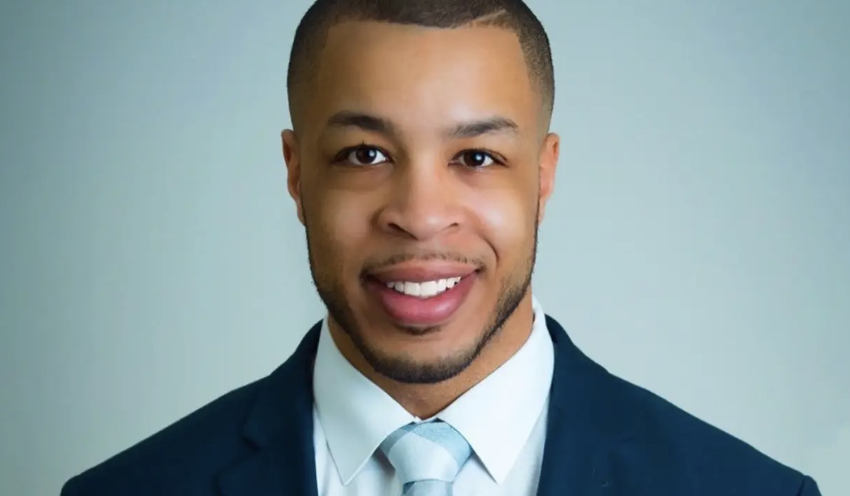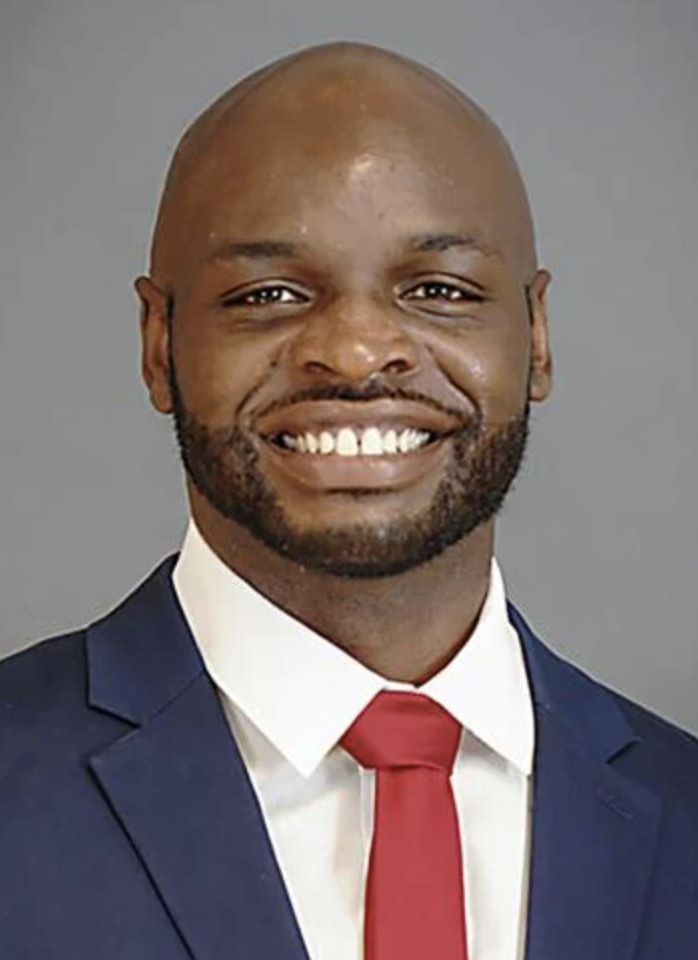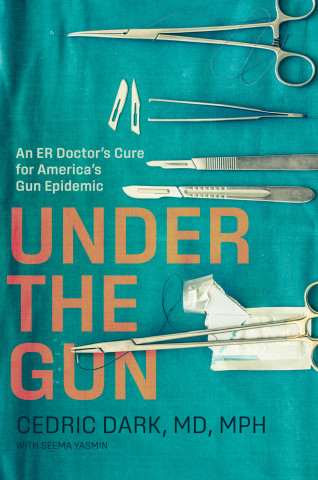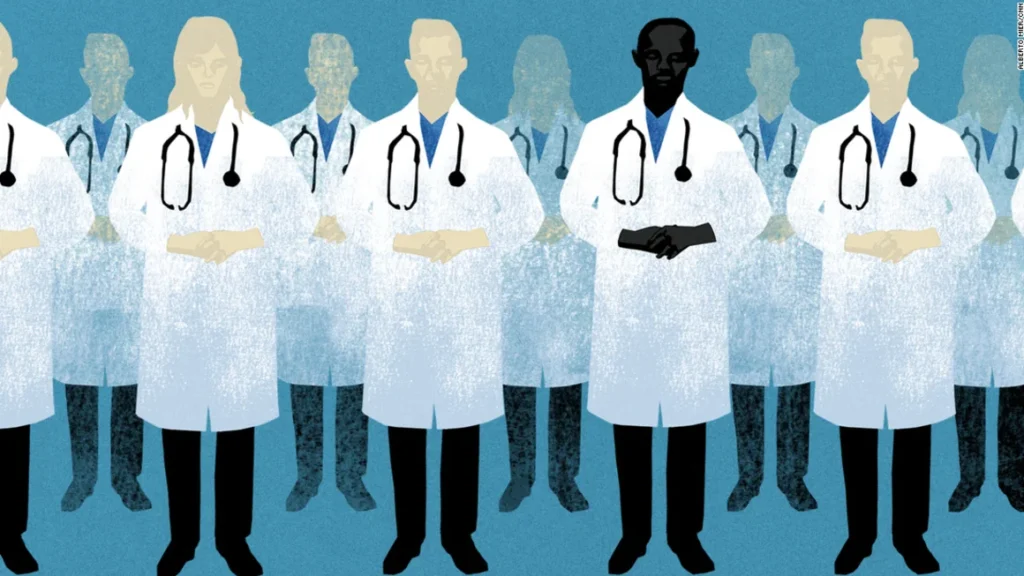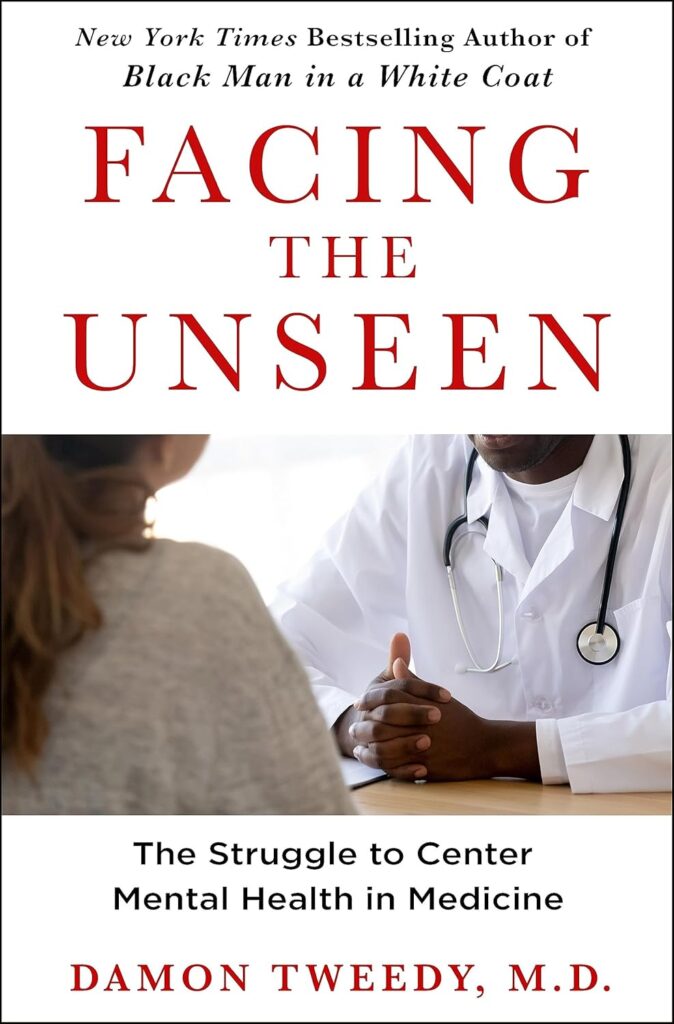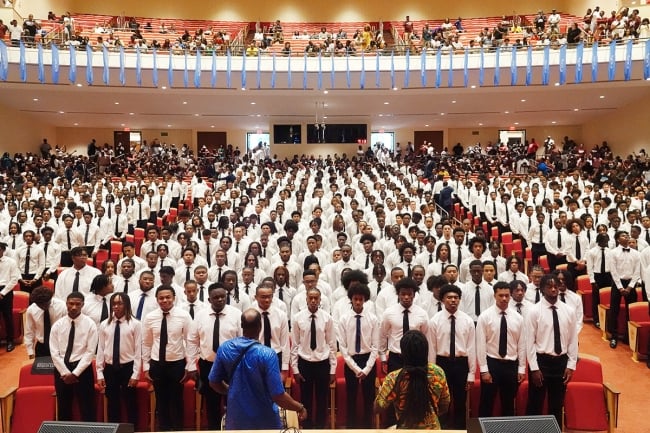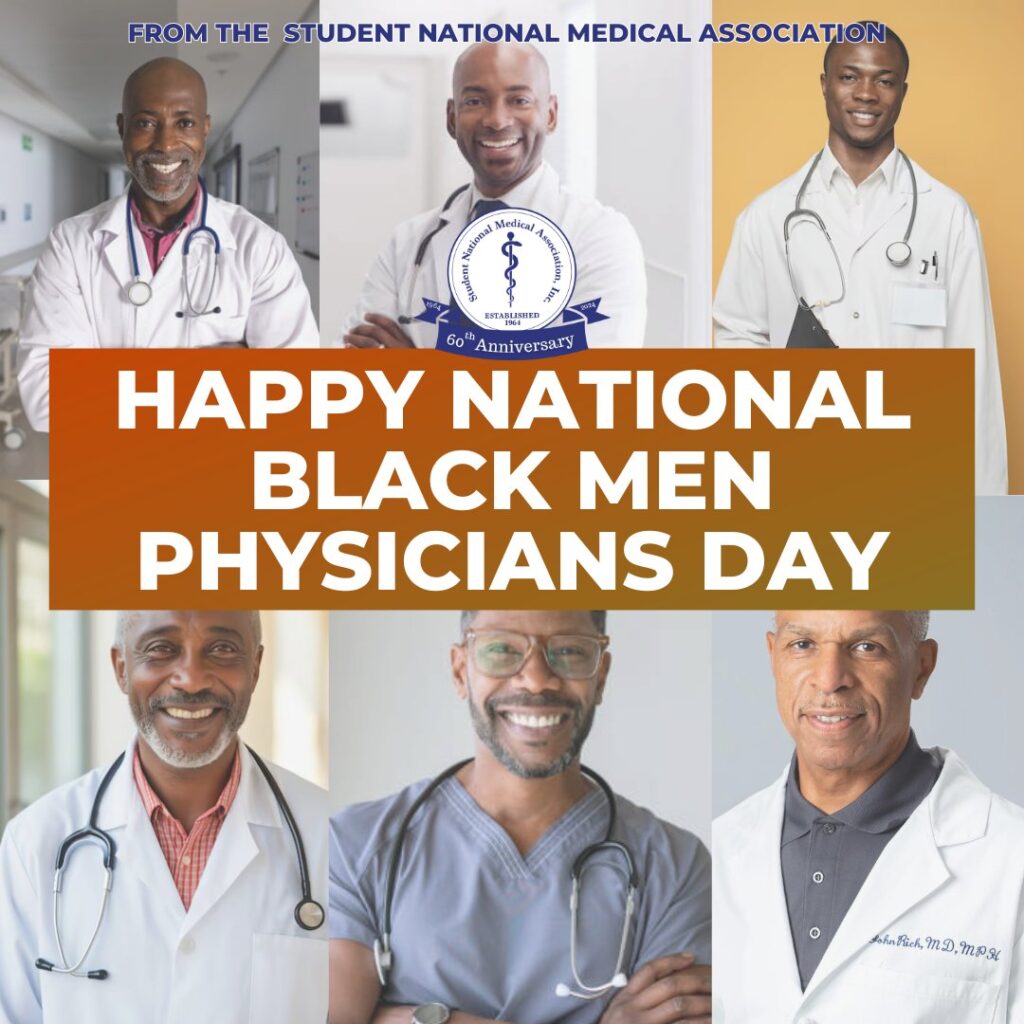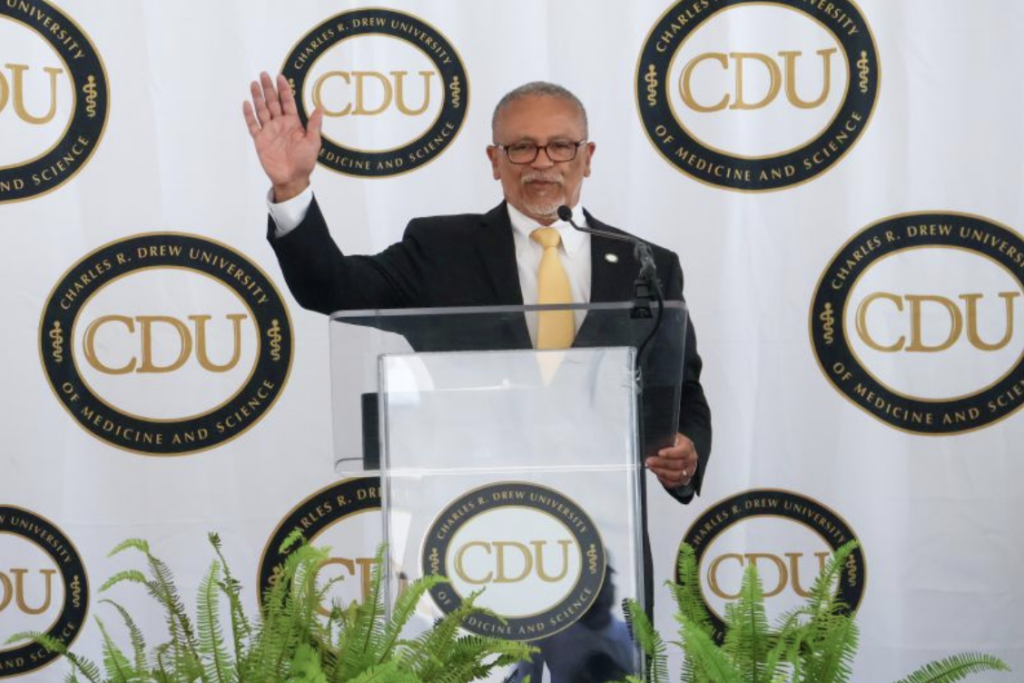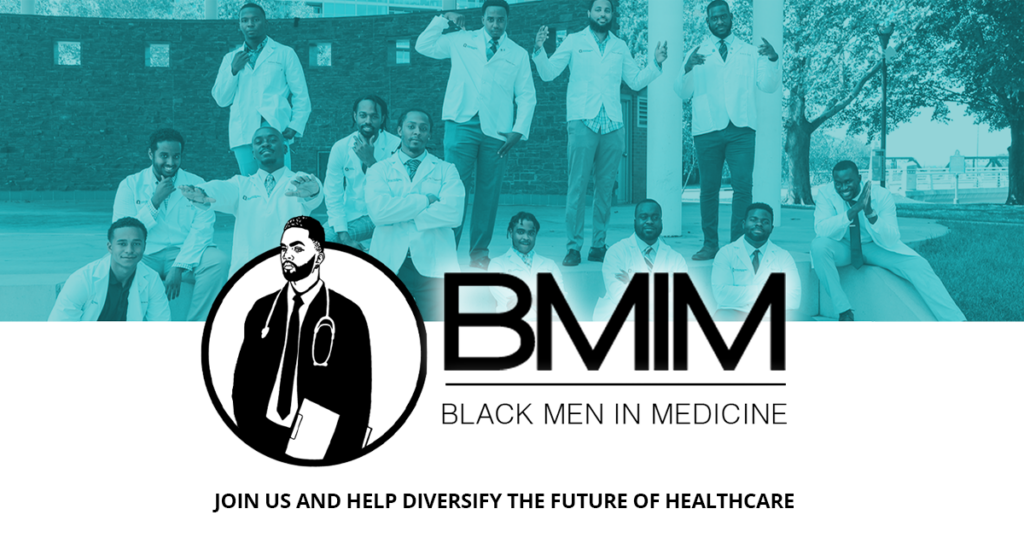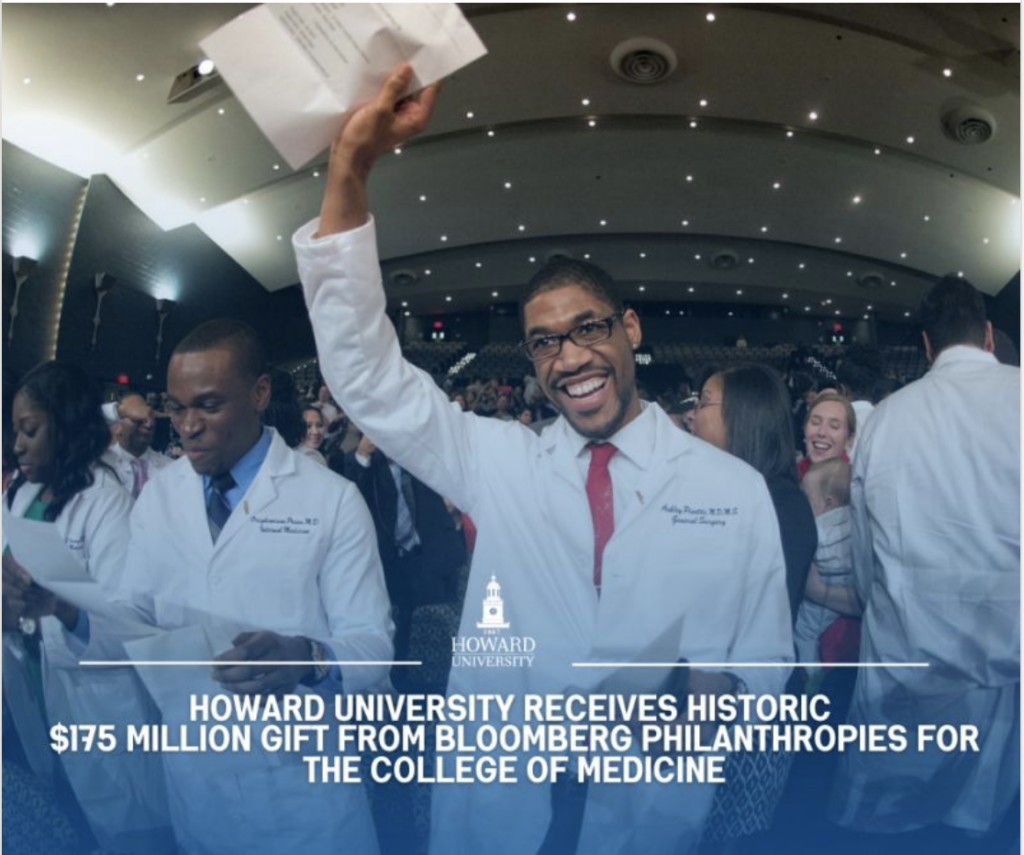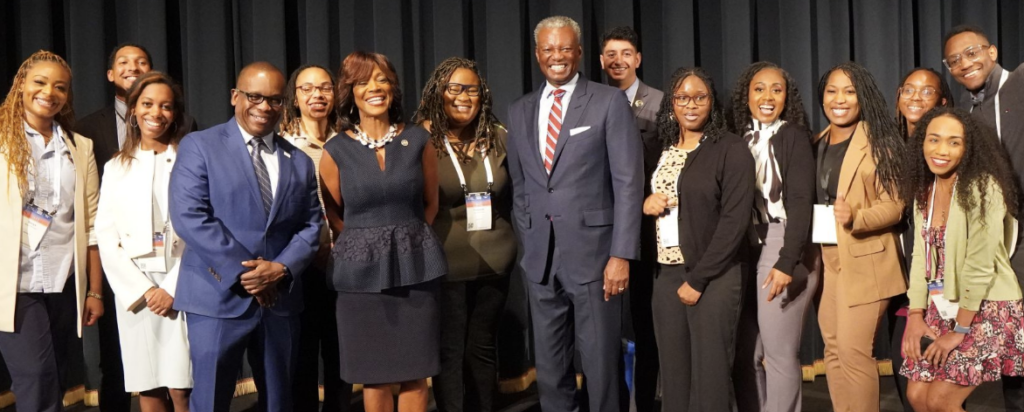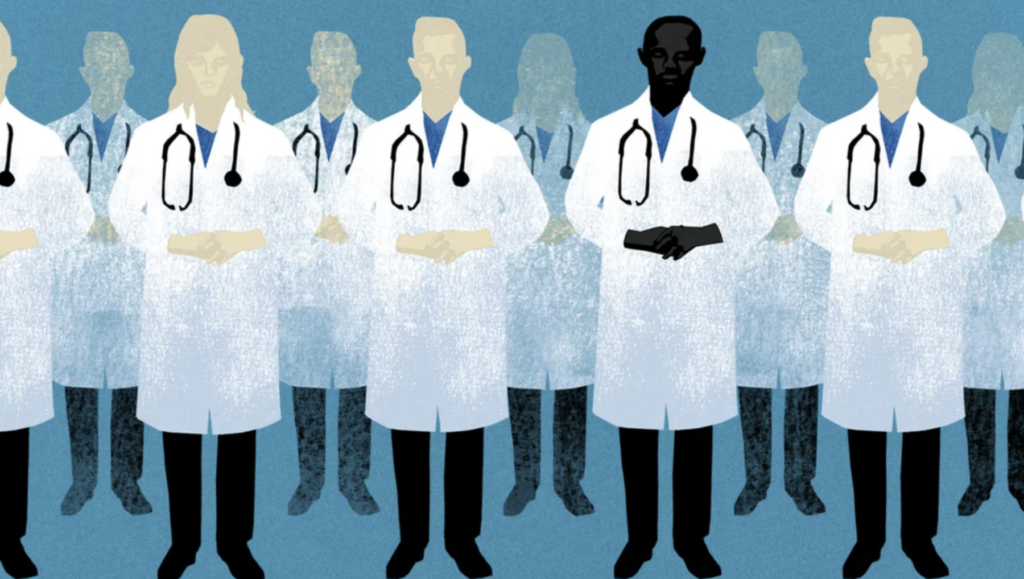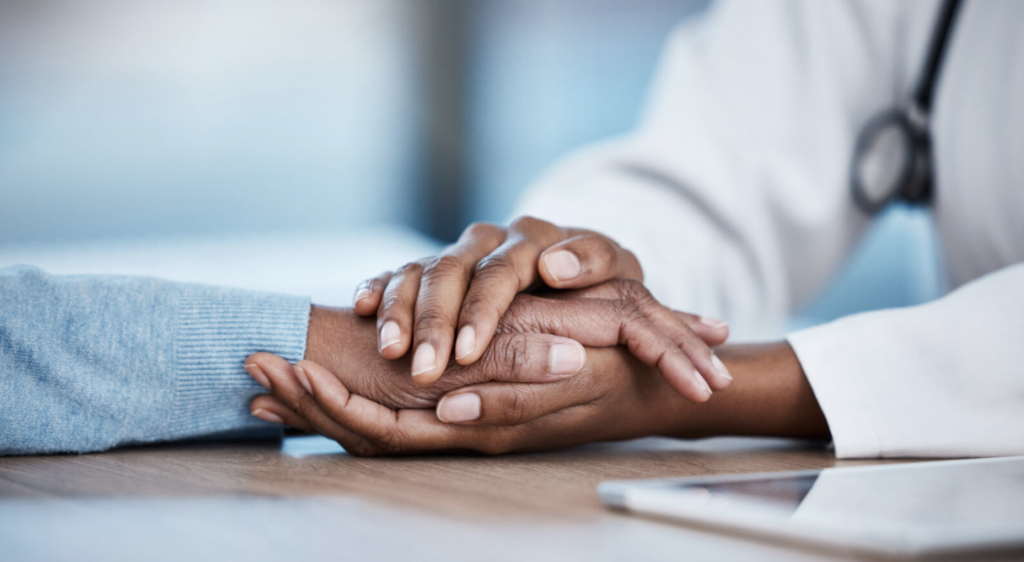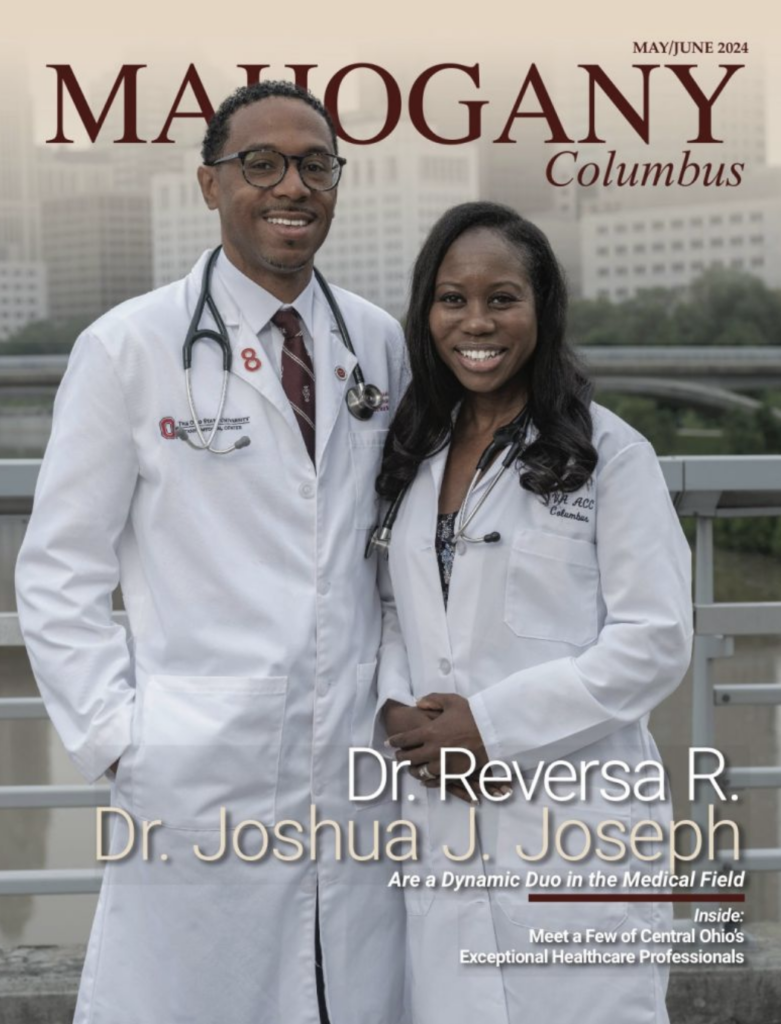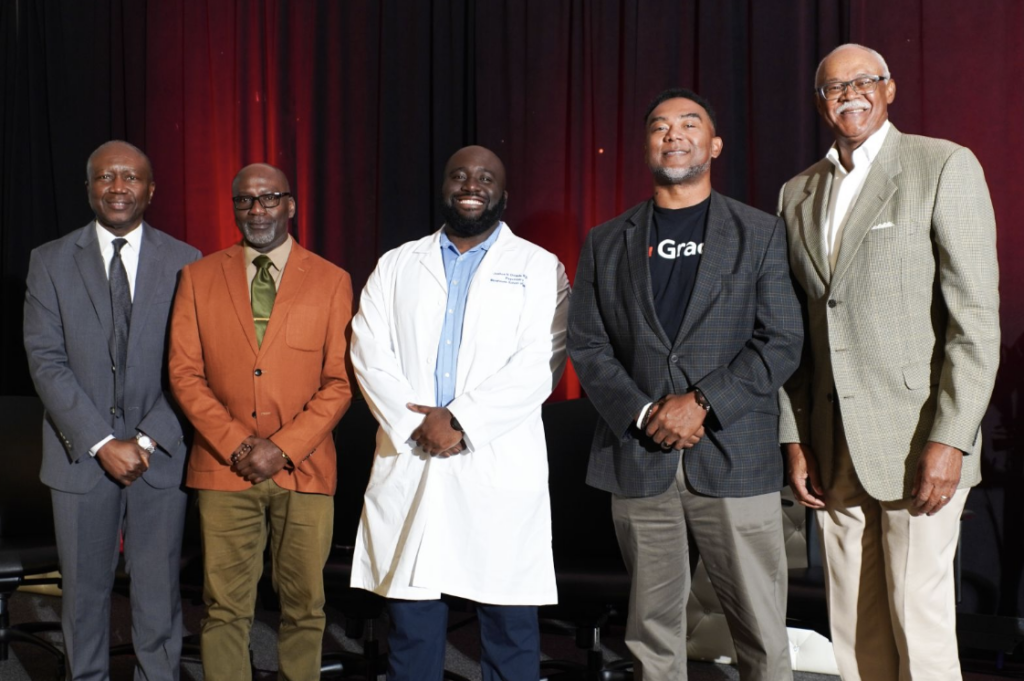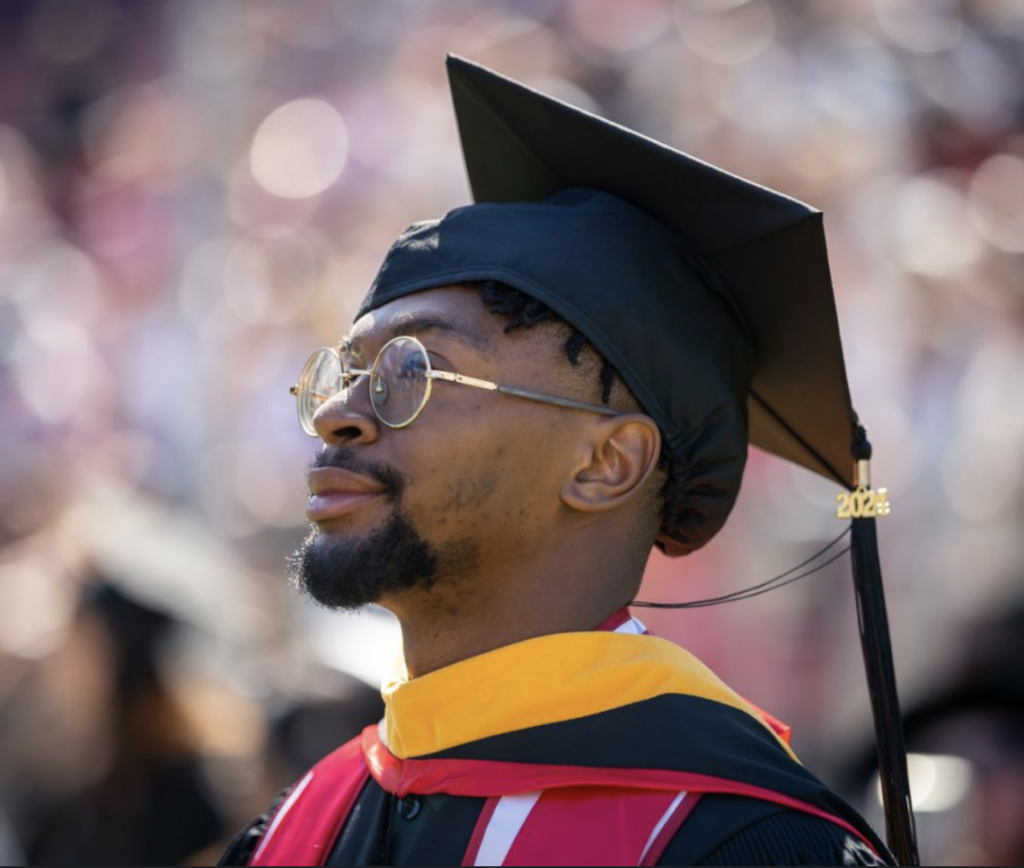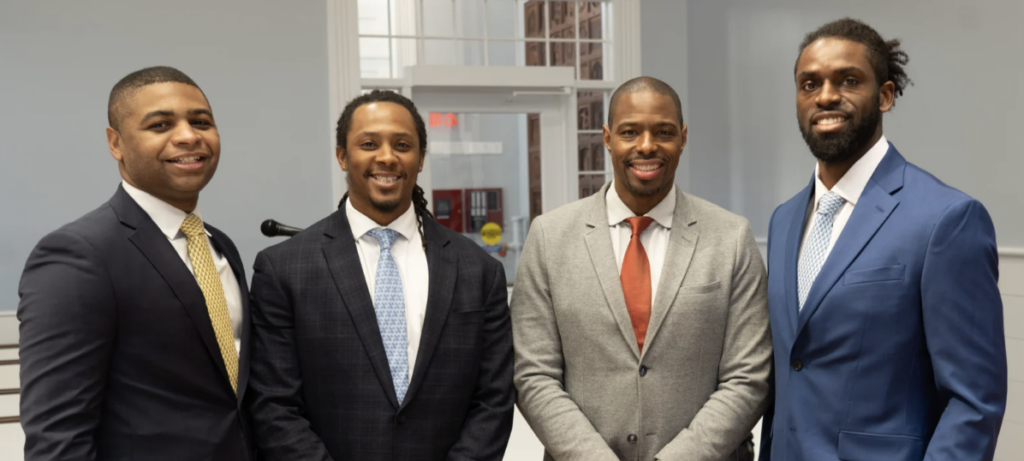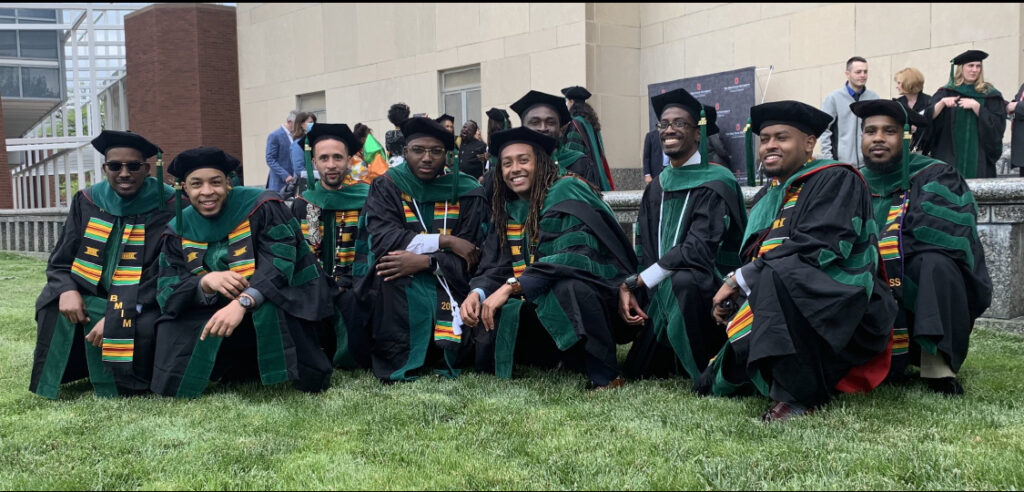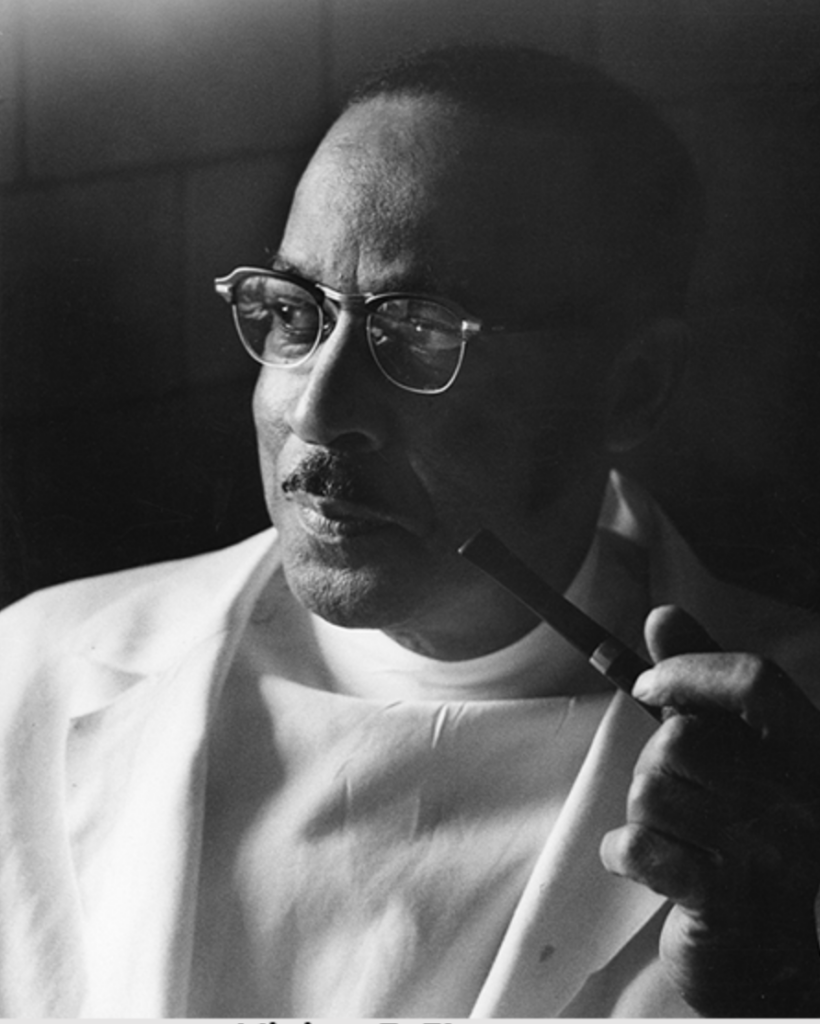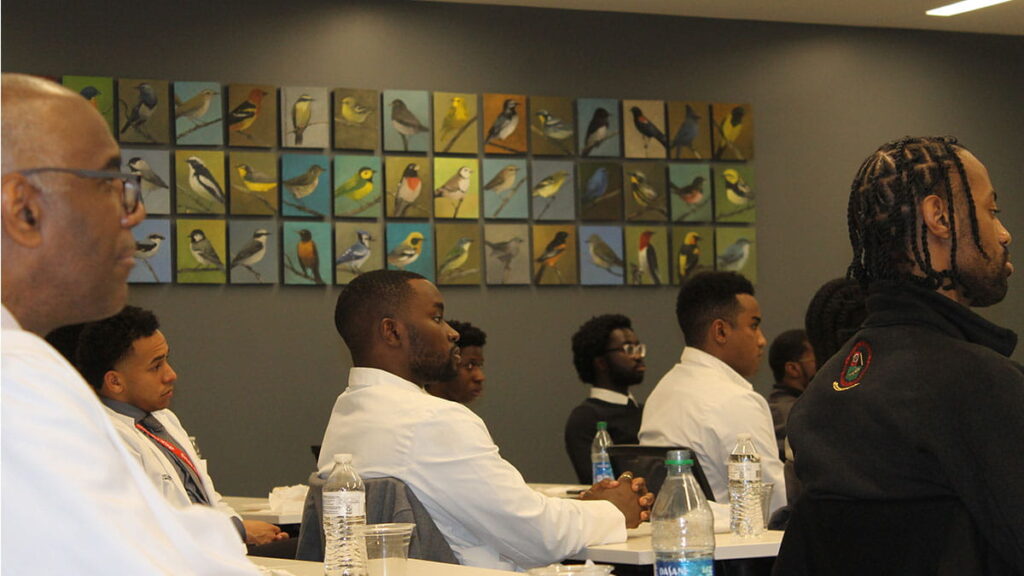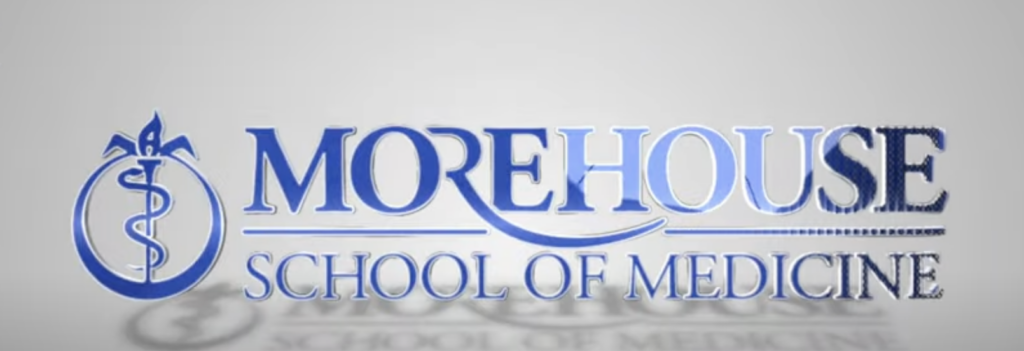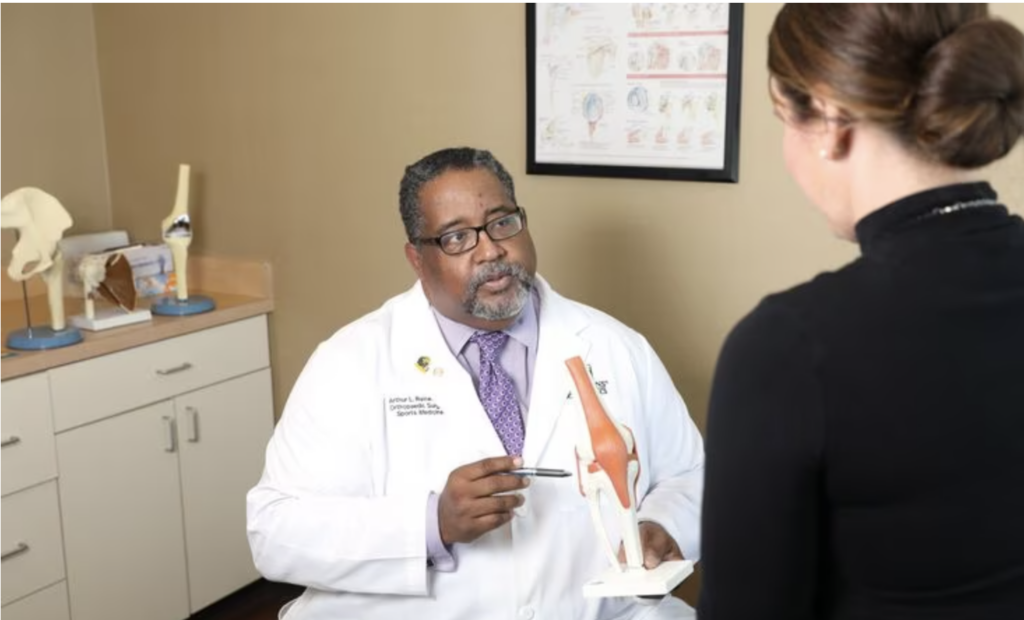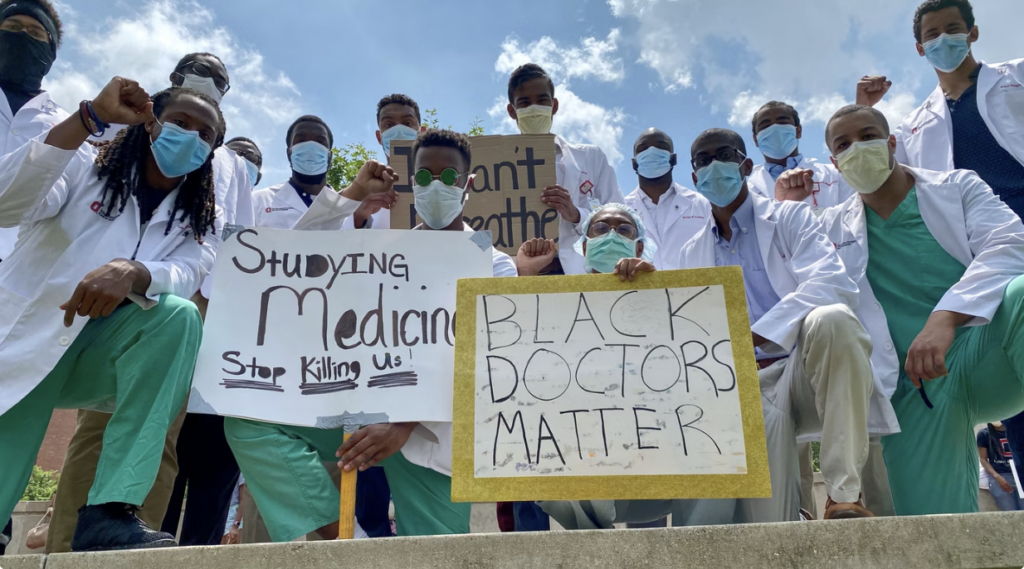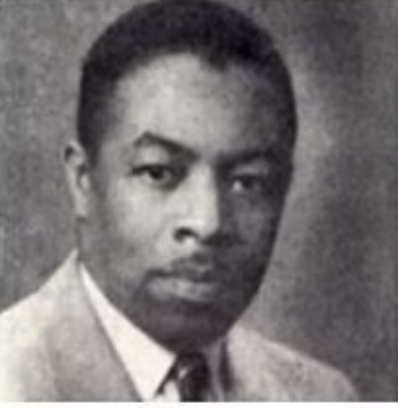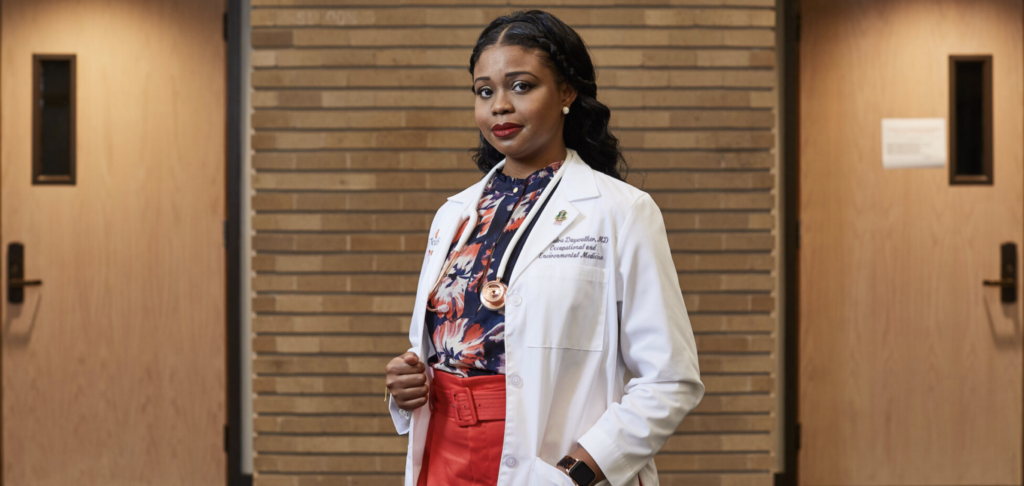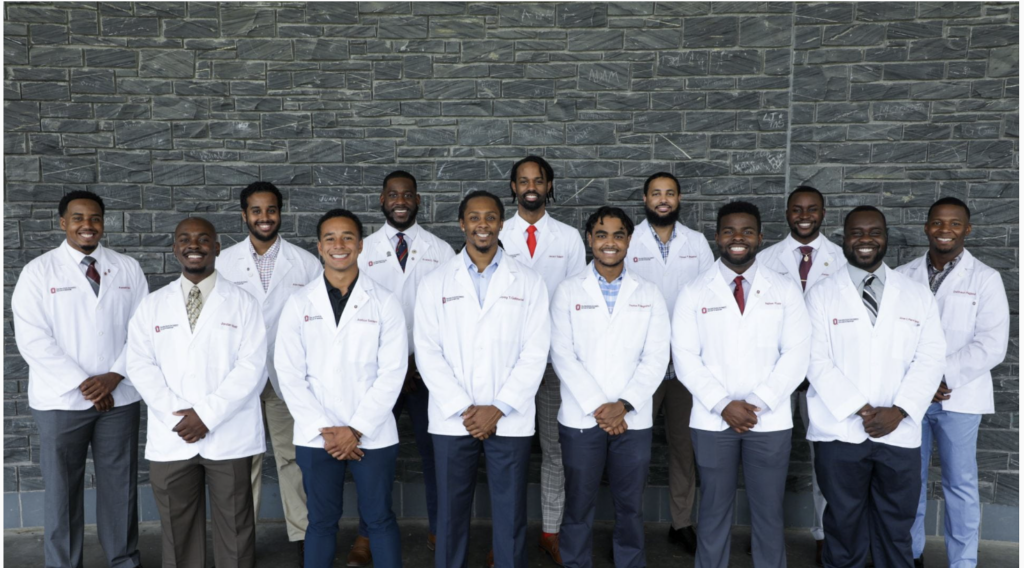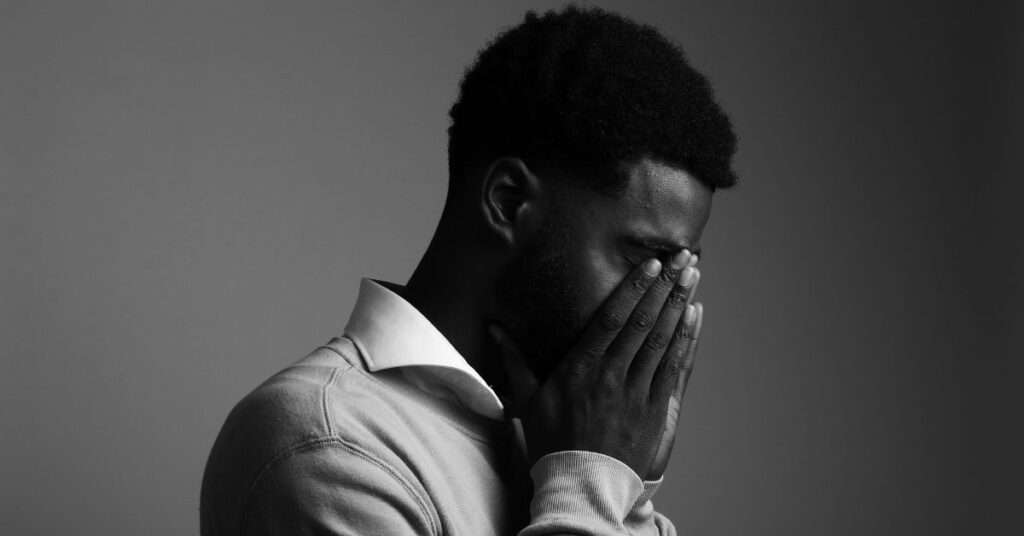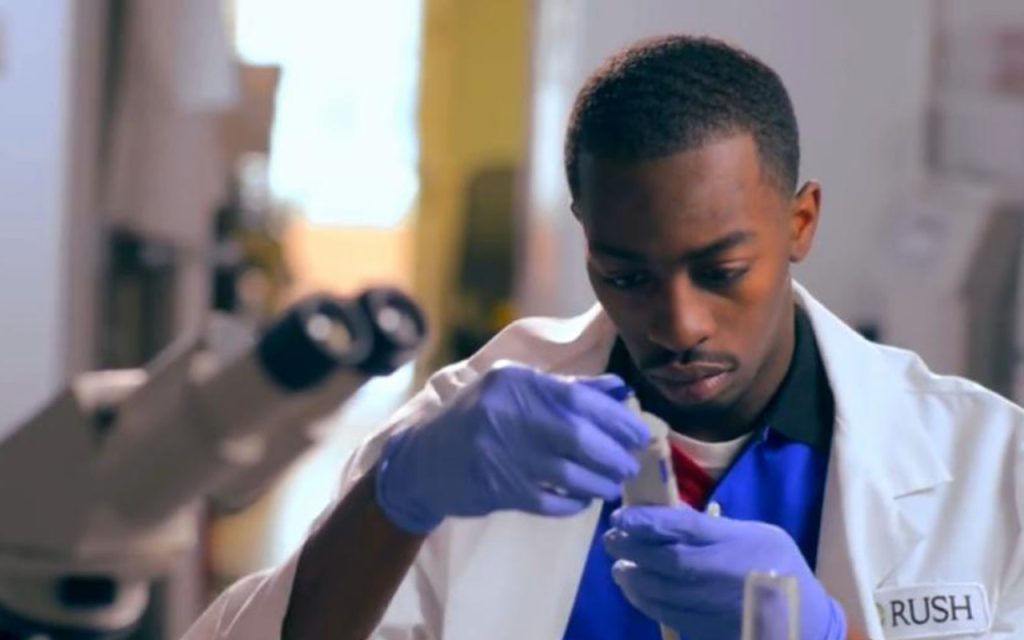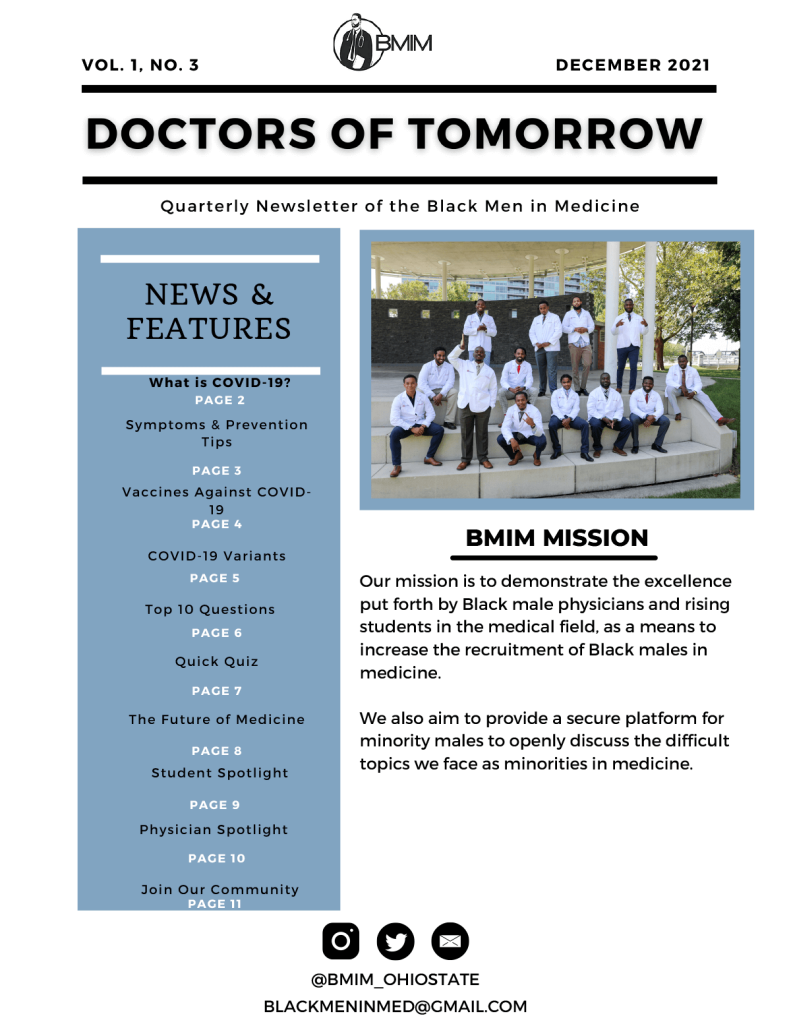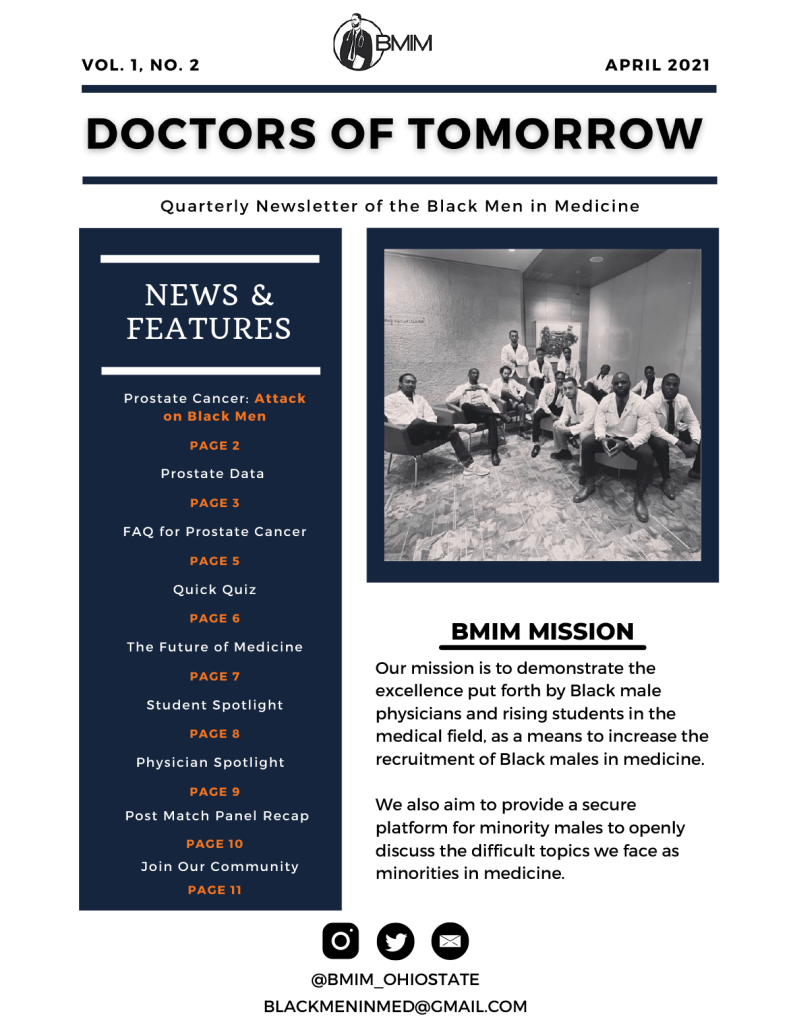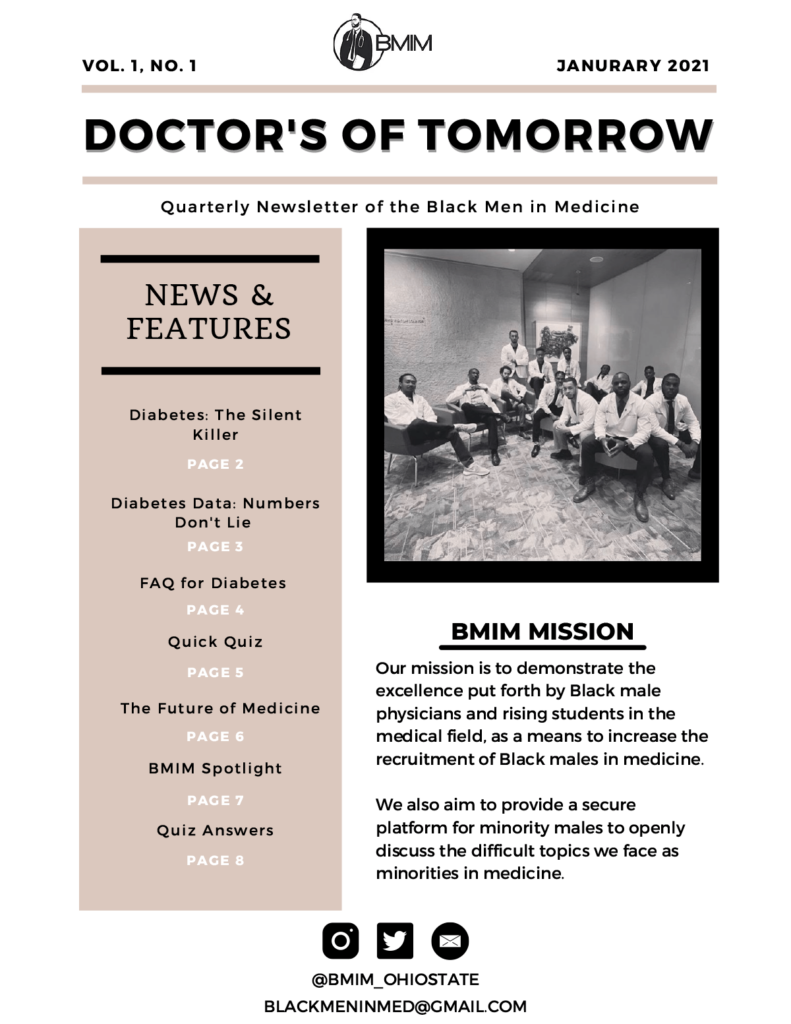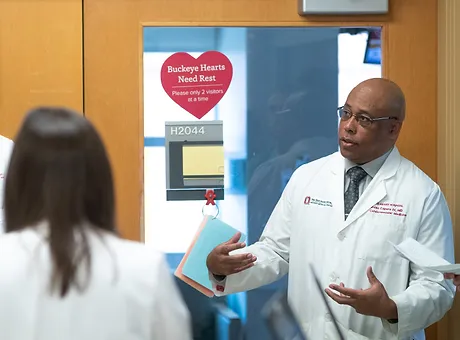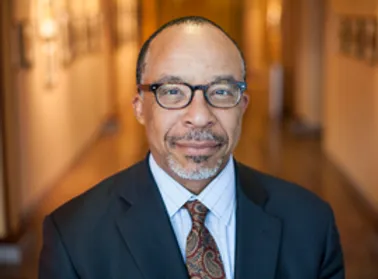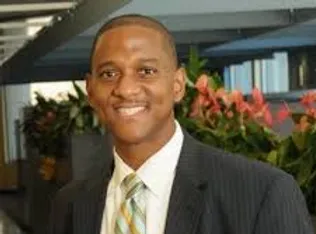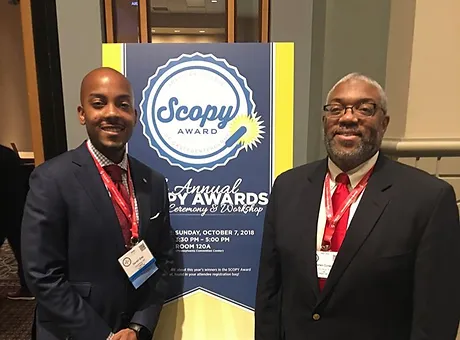Griffin Rodgers, MD – Black Excellence
The light we hold for our community:
Rodgers received his medical degree from Brown University in 1979, and after completing a residency in internal medicine and a fellowship in hematology, began conducting research at NIDDK, part of the National Institutes of Health outside the nation’s capital.
In 1998, the Food and Drug Administration (FDA) approved the first-ever medication to treat SCD, hydroxyurea, thanks to Rodgers’ research.
Previously, doctors had little to offer SCD patients — which affects millions of people of African descent — other than blood transfusions. By sparking the production of healthy blood cells, hydroxyurea significantly reduces pain, hospital stays, and other SCD problems. It can even increase life expectancy of patients.
Thoughts Of A Second Year Resident
Probably the best advice I received as an intern was, “The highs are high, the lows are low.” Ironically, the first time I heard this was after arguably my most difficult month of residency. After the initial adjustment period of a few weeks, I felt as if “this was easy.” I was fresh out of the 4th year of medical school (i.e. well rested) and full of energy. I got along seemingly well with the staff and patients alike. The medicine wasn’t bad. Stomach pain + abnormal labs? Order a CT. Chest pain that radiates to the left arm? EKG + trop.
I thought, “Did I really have to suffer through four years of medical school for something I largely could’ve learned through experience?”
The short answer is yes…yes… and more yes.
For as soon as I thought “I could do this in my sleep,” I ended up doing it, without sleep… without help, and by myself at 4am in the middle of the night.
One of my highest points in residency had to have been when I intubated a patient during a traumatic arrest with CPR in progress. The patient was strapped to a back board, the airway was bloody, and the whole room was in chaos. Yet, in the madness of the trauma bay, everything came to a stop for me. I became completely focused, knew exactly what had to be done, and I executed it. Blade in the mouth, sweep the tongue, lifted the patient’s neck, perfect view of the vocal cords, and passed the tube all in one take. It was textbook and afterwards, I was on top of the world. In that moment, nobody could tell me anything. Between the congratulations and confirmation on the X-ray the tube was in place; I was so big headed my head could’ve exploded twice lol.
Funny enough, life has a way doing just that.
Almost two weeks later, I experienced one of my worst moments in residency. It is said, “You’ll always have one patient you’ll never forget.” Well, this was my one. Again, it was a traumatic arrest, CPR in progress, and I was at the head of the bed. I stuck the blade in the patient’s mouth, just as I had two weeks prior, and lifted, expecting to get a similar view. Spoiler alert, it was an awful view. From the moment the patient coded, everything that could’ve went wrong, went wrong. None of the airway supplies were in place how I would’ve preferred, the patient was positioned too low in the bed for me, and I could barely visualize over the epiglottis despite two attempts. I ended up handing off the intubation to my senior who seemingly got the tube in one swift try. To further add to the situation, after multiple rounds of CPR, we were unable to get ROSC. As such, I had a front row seat as the patient unfortunately passed away.
Have you ever seen the homer Simpson meme, where he fades into the bushes? Now imagine that x 100, and that’s what I could’ve done. I wanted to just disappear forget this moment even happened. But it did. Both of those moments happened and both of them were instrumental in preparing me to be a physician.
It’s part of the process, and I have to trust it.
To the new interns, the highs will be high, but the lows will be low. The goal is not to have more highs than lows. No, on the contrary. The goal is to remain grounded and balanced. Never too high, and never too low.
“Perfectly balanced, as all things should be” – Thanos
You will have highs, and you will have lows. That’s just what this is. You’re a doctor now. A new one at that. So don’t be too hard on yourself, but don’t go too easy either. For in the game of lives, such as the one we play, there is little room for error. However, just know you will have back up. You will have those who will pick you up when you fall, as well as those who will pull you back to earth when you get too high. Keep those people close. During both mentioned events, I leaned on my co-residents hard, and they held me up. Now, as a soon to be second year and senior resident to some incoming interns (it’s crazy that I’m typing this lol) I will be leaning on them even more as I step into a leadership role.
So, welcome to the best profession on earth.
You’re in for a wild ride.
NIH scientists pioneer promising treatment for intractable cancer pain: RTX is a non-addictive pain therapy derived from a cactus-like plant.
Interesting read for all my pain enthusiast out there
Bigs up to the good brother Dr. Joel Bervell!
Dr. Bervell has landed on the TIME 100 list for most influential creators in the world for his content geared to racism in medicine. Appreciate all your hard work and dedication for the culture #BMIM
Beyond the Books: How to Navigate Medical School by Dr. Brian K. Fowler
Navigating the preclinical and clinical years and how you landed on your specialty, and things worth considering?
Medical school is essentially split into two sections: preclinical and clinical years. Over the course of these four years, you are expected to decide on a specialty that you can see yourself enjoying for the next 20-30 years. What happens during your preclinical years? What happens during your clinical years? How am I supposed to decide on a lifelong career in less than four years? As I take you all through my experience through medical school, I will be sure to touch on all these questions, along with some other important points to consider.
Preclinical years:
Preclinical years are traditionally 2 years in length, but several medical schools are switching to 18 months of preclinical time. Pre-clinical means exactly what you would think: it is the period before you begin clinical rotations. This section of medical school looks very similar to your undergraduate years, with much of your time being spent in the classroom. Though there is some variation from one medical school to another you have more control over how you take in the information being presented. While some med schools require you to attend classes in person, others allow you to watch lectures live, watch them at a later date, and some med schools have all these options available for you to choose from.
Personally, I consider myself a disciplined person; I also consider myself to be a morning person. With this in mind, I decided not to attend any lectures during my preclinical years, and I woke up at 4am to begin studying. I would essentially teach myself the lectures for the day and then watch the recorded lectures that evening. This allowed me to make the necessary connections on my own, then listen to my professors teach it to me. I was able to get more out of lectures by already going through them in depth beforehand.
Preclinical tips:
#1 Be sure to know YOURSELF! If you are someone that does better with having structure and going to lecture, then you
DO NOT need to be studying at home. If you are a night owl, you DO NOT need to be trying to wake up early to study.
#2 Med school is not the time to try to reinvent yourself. Work to your strengths — after all, they are what got you accepted to medical school, which is no easy feat!
Clinical years:
In my opinion, the clinical years is when all the fun begins.
During this time, you will rotate through nearly every specialty in medicine. You will begin rotations with little expectations. As you progress through your 3rd year you will be expected to take on more responsibilities with your patients, as well as come up with more comprehensive treatment plans. Among the biggest things that will be expected of you is to know your patients very well! Med students do not carry as many patients as residents or attendings; due to having less patients you are expected to know so more about each of them. During 4th year you will begin preparing yourself for your intern year! With that you will begin to take on even more responsibilities, patients and the alike. The goal is to get as close as you can to an intern workload.
Clinical tips:
#1 Arrive on time every single day! There are many things out of your control but being timely is not one of them.
#2 Know your patients better than anyone else on your service. HPI, PMH, FamHx, etc, no one should know more than you.
#3 Be sure to stay organized with your thoughts and clinical presentations.
How to choose a specialty:
Physician depression, suicide and burnout are all higher than the general population. Choosing the right specialty for you can go a long way in mitigating the likelihood of this occurring. There are several aspects people look at when choosing a specialty: prestige, salary, lifestyle, the people in that field, etc. In my opinion, neither of those are the most important. Your true genuine interests should remain paramount in your decision!
At the very “worst,” as a physician you will command a $250,000 salary – that is a lot of money! A lot of medical students make the mistake of comparing salaries within specialties. If you want to compare salaries, you should do it against the average American household income, which is around $50,000. So, basically, a “low paying specialty” will make FIVE TIMES more than the average American household. Regardless of specialty, physicians are in the top 5% of all income earners in the US, meaning the lowest paying physician still makes more than 95% of Americans. Also, this isn’t even considering if your spouse is working.
There is no amount of money that will satisfy you from spending time with your family, enjoying your hobbies, or going to a job that you don’t truly enjoy. This is especially true after you’ve made a quarter of a million dollars or more for 5, 10, 15+ years. My entire life I have witnessed firsthand people going to a job they don’t enjoy, so this is particularly important to me. There is nothing I want to see more than BMIM truly thriving and truly happy in their careers, and not just social media “thriving and happy.”
People commonly talk mention figuring out of you’re a “surgical” or “medicine person.” Though I didn’t initially believe in this, I think it’s a good starting point. Until I started my clinical years, I thought I was a surgical person. I kept an open mind and truly explored every specialty and found out that I am much more of a medicine person. I would not have been able to figure that out if I didn’t keep an open mind and follow my interests, and not money and prestige.
Specialty tips:
#1 Don’t chase salary, you will make more than enough over your career regardless of specialty.
#2 Don’t chase prestige, other people’s opinion of your career will not mean much when you’re not able to do the things you enjoy or go to a job that truly fulfills you.
#3 Do chase your interests, as you will reap the benefits of working in a field that you enjoy in your personal and professional life for years to come!
Black Boys and Men in Medicine supports path to health care career
The College of Medicine is addressing this scarcity directly by reaching out to young Black male students through Black Boys and Men in Medicine, a program created with the partnership of the Black Male Working Academy (BMWA) in Lexington. BMWA and BBAMM offer middle school and high school boys connections with Black mentors in UK’s health colleges to support a path to careers in health care
FDA approves Johnson & Johnson’s nasal spray for depression as stand-alone treatment
Spravato, is now the first-ever stand-alone therapy for treatment-resistant depression
Chief Cardiology Fellow in Kaiser Permanente Northern California Wins National American Heart Association Award
Award winner Dr. Steven Hamilton (left) with Dr. Johnathan Zaroff, Cardiovascular Disease Fellowship program director and cardiologist with The Permanente Medical Group
New Black Man In Medicine Book Just Dropped!
Under The Gun: An ER Doctor’s Cure for America’s Gun Epidemic
A New Book by Dr. Damon Tweedy, Author of Black Man in a White Coat
A fellow Black Men in Medicine, Dr. Damon Tweedy’s first book, Black Man in a White Coat, was an inspiration to many of us as we pursued our dreams of becoming physicians. I encourage you all to check out his new book, Facing the Unseen, where he looks to center the conversation of prioritizing mental health in medicine. I know I’ll be ordering myself a copy soon.
Enrollment in HBCUs Have Increased Since Affirmative Action Ban
A silver lining and welcome response to the affirmative action ban; HBCUs have been beacons for Black excellence for decades. Now, we need the financial and administrative support for all HBCU institutions, and the debt that some institutions are owed, to match…
Black Enrollment Dips at Major Colleges
We are facing a very serious crisis, and a movement meant to inhibit students like us from achieving prestigious opportunities. Reports like this show how significant it is – and why support of this platform and this organization is so important for improving racial disparities.
Happy Belated National Black Men Physician Day!
And if you missed the celebration this year, I encourage you to mark you calendars for next year! Wishing all my fellow Black Men in Medicine continued wellness, success, and prosperity
Penn Future Black Men in White Coats Club
Shoutout to these future Black Men in Medicine at the University of Pennsylvania for taking up the mantle and creating community for us in a space where there is none. Keep up the great work, young kings 👑
Benefits on Attending an HBCU
The students who attend an HBCU typically are surrounded by students who were admitted under the same academic standards, which can make all the difference in how they perform. Many of the black students admitted to more prestigious schools have SAT scores that are above the national average but significantly below those of their white and Asian classmates, and so they struggle to keep pace. This mismatching of students and institutions is much less likely to occur at an HBCU, which can result in someone receiving a better education at a less-selective school.
I Love Residency. Mic Drop.
— Finding the right program can make all the difference, an interesting perspective from one of our very own, Dr. Mark Mcintyre
Congratulations to Dr. Bignall!
Shoutout to faculty leader for BMIM for the Ohio State Chapter, Dr. Ray Bignall, on this huge and deserved honor. He’s been an important advocate for us from our very beginning. We’re grateful for him to be a part of our organization, and we know there’s even more big things to come! 💪🏾
What if he wasn’t Tyreek Hill?
Another reminder of the reality of being a Black Man in America; no matter the profession, status, or salary
The Eighth Annual Humanism in Medicine
Last Lecture Series featuring
Quinn Capers, IV, MD, FACC, FACP
Professor and Chair, Department of Medicine Howard University College of Medicine
To Enhance Diversity and Mitigate Racial Bias in Medicine:
An Academic Physician’s Mission to Incorporate Activism into his Clinical, Educational and Scholarly Work
Thursday, August 29, 2024, 4 p.m. EDT: Reception (in person only), 4:30 p.m. EDT: Last Lecture
In-person attendance details:
Ross Heart Hospital Auditorium, 452 West 10th Ave.
The Ohio State University Medical Center Campus
If you can’t make it to the in person event, there is an option to tune in virtually
We are getting ready for the State of the University speech to be delivered by CDU President and CEO Dr. David M. Carlisle on Tuesday, Aug. 27
The theme of this year’s address is “Community Founded: Standing Our Ground.” This will be the 12th State of the University address from Dr. Carlisle.
We are getting ready for the State of the University speech to be delivered by CDU President and CEO Dr. David M. Carlisle on Tuesday, Aug. 27.
RSVP to attend → https://bit.ly/4cvfK6N
Watch the livestream → https://lnkd.in/g5t5cdkr
Race and Medicine: We Need More Black Doctors. These Organizations Can Help
Only 5 percent of doctors in the U.S. identify as Black
This is Race and Medicine, a series dedicated to unearthing the uncomfortable and sometimes life-threatening truth about racism in healthcare. By highlighting the experiences of Black people and honoring their health journeys, we look to a future where medical racism is a thing of the past.
Why Is Doctor Pay Decreasing and What Can We Do About It?
— It’s time to take back control of our profession
Episode 9: Dr. Augustus A. White – First of a Kind
Dr. Augustus A. White III is an American surgeon who is the Ellen and Melvin Gordon Distinguished Professor of Medical Education and Professor of Orthopedic Surgery at Harvard Medical School and a former Orthopedic Surgeon-in-Chief at Beth Israel Hospital in Boston, Massachusetts.
He was the President and Co-founder of the J. Robert Gladden Society, whose mission “is to increase diversity within the orthopedic profession and promote the highest quality musculoskeletal care for all people.
This episode uncovers how he become the first African American medical student at Stanford, surgical resident at Yale University, Professor of medicine at Yale, and department head at a Harvard-affiliated hospital, Beth Israel Hospital.
To hear more about his story make sure you tune in to another Black Men in Medicine Podcast episode, bringing you nothing but the gems!
Big ups to the Morehouse School of Medicine for completing their 2nd annual Men’s Health and Wellness Forum at Hartsfield-Jackson Atlanta International Airport, titled “A Slam Dunk: Health & Wellness Seminar.
“Our H.E.A.L. Clinic provided free health screenings to the Department of Aviation Employees, and MSM experts, including Dr. Rick Kittles, Dr. Joshua Omade, MD, and Dr. Anekwe Onwauanyi, alongside Grady Health System COO/CFO Anthony J. S. led a panel on crucial men’s health issues, moderated by H. James Dallas.
MAP Speaker Series – Black Men in Medicine
The Multicultural Alumni Partnership (MAP) Speaker Series funded by the Diversity Initiative Fund aims to partner with speakers whose views, work, and experience aligns with our mission as a school to develop men of good character by educating them in mind, body, and spirit. Understanding the power of diversity is a critical part of building character
Episode 8: Dr. Matthew Anderson: Cut From A Different Cloth; the rise of a neurosurgeon as a minority amongst minorities
Matthew N. Anderson is a neurosurgeon, who trained at Brown University. He is interested in cerebrovascular neurosurgery, with a specific interest in interventional treatment of ischemic stroke and pediatric vascular malformations. Matthew is originally from Indianapolis, Indiana. He then went to Stanford University to complete his undergraduate degree in Biological Sciences. At Stanford, Matthew was president of the Stanford Black Pre-Medical Organization, an organization dedicated to increasing the number of African American doctors in medicine. After Stanford, he attended University of Connecticut for medical school where he was co-president of the Student National Medical Association for two years. Throughout his academic career, Matthew has been interested in learning ways to increase diversity in medicine through various mentoring and pipeline programs.
During this episode, he explains how he got involved in medicine, and the unique challenges he has faced as black gay physician. He uncovers the impetus behind his passion for increasing diversity in medicine and the importance of self care to stay fueled on his mission. When Dr. Anderson is not performing clinical responsibilities, he enjoys reading, running, weightlifting, cycling, hiking, traveling and karaoke. To hear more about his story make sure you tune in to another Black Men in Medicine Podcast episode, bringing you nothing but the gems!
Episode 7: Dr. Ray Bignall: From Pilot to Pediatrician, and the significance of his HBCU experience on the physician he is today
O. N. Ray Bignall II, MD, FAAP, FASN is Assistant Chief Diversity and Health Equity Officer at Nationwide Children’s Hospital in Columbus, Ohio. He also serves as Director of Kidney Health Advocacy and Community Engagement for the Division of Nephrology and Hypertension, and an Assistant Professor of Pediatrics at The Ohio State University College of Medicine. A graduate of Howard University and Meharry Medical College, Dr. Bignall completed his general pediatrics residency, clinical fellowship in nephrology, and NIH post-doctoral research fellowship at Cincinnati Children’s Hospital Medical Center.
In this episode Dr. Bignall unveils his inspiration for becoming a physician, while elaborating on the difficult decision to go against his families dream for him, in quest for his own happiness. He touches on the impact of his Jamaican roots, and the importance of being a health advocate in underserved communities. Dr. Bignall provides tangible examples of how we can make strides on improving diversity in health care, all while dropping Gems on how wears so many hats and manages to preserve a work life balance. This is an episode you don’t want to miss, make sure you tune in to another Black Men in Medicine Podcast episode, bringing you nothing but the gems!
The Story of Evans Osuji: Fourth year medical student and current BMIM student organization president at The Ohio State College of Medicine
Evans Osuji fourth year medical student and current Black Men in Medicine (BMIM) student organization President, shares details of his medical journey including why he entered the field of medicine and the impact BMIM has played on his success during his time in medical school
NIH: Notable African American Surgeons
Vivien Thomas, a key member of the first surgical cures for cyanotic heart diseases, was not even a physician. However it seems he was given credit by a lot of the physicians he did train; this Black History Month, I would like to add to the credit he so much deserves. Thank you Vivien Thomas, Dr. Scott, Dr. Evans, and Dr. Bath and all minority health care professionals that have made our dreams possible.
Black Men in Medicine creates community and support network for doctors of tomorrow
Black Men in Medicine (BMIM) is an organization that supports and mentors Black male individuals at various stages of their medical journey. With a focus on undergraduate and medical students, residents, attending physicians, and faculty, BMIM provides presentations, discussions, resources, and educational programs. They also offer mentorship for elementary, middle, high school, and pre-med students, aiming to inspire them to pursue a career in medicine. The organization creates a sense of brotherhood and community, providing a safe and inclusive environment where #Blackmeninmedicine can support and encourage each other.
The Impact of Black Men in Medicine with Drs. Corey Gatewood and Brian Fowler
Corey Gatewood, MD and Dr. Brian Fowler, MD share their experience on the impact BMIM had during their time at The Ohio State College of Medicine. The BMIM organization serves as a meaningful mission to increase the recruitment and retention of black males to the field of medicine.
MSM HCOP’s Black Men in Medicine Round Table Discussions
This is a video of the glimpse of the impact of the BMIM Round Table Discussions at various academic institutions
Trend of fewer black male doctors has broader public health impact
This article discusses the issue of the underrepresentation of black male doctors and explores potential solutions to address this disparity. It highlights the importance of early exposure and mentorship programs in inspiring and guiding young black males toward careers in medicine. The article also mentions initiatives aimed at increasing diversity in medical schools and the need to address systemic barriers and biases that hinder the recruitment and retention of black male physicians. Finally, it emphasizes the importance of community support and collaboration to create a more inclusive and representative healthcare workforce. Be sure to check out the interactive map representing black doctors by percentage in each state. Can you guess which state has the highest representation?
Unequal Pay for Doctors
This article discusses the issue of unequal pay among doctors, with minority physicians experiencing significant disparities compared to their white male counterparts. The study conducted by researchers at Harvard Medical School reveals that black male physicians face a wage gap of approximately $38,000 per year compared to white male physicians, even after adjusting for factors like years of experience and specialty. This wage gap highlights the ongoing systemic biases and discrimination within the medical field that impact black male doctors disproportionately. Addressing and rectifying these inequities is crucial to promoting diversity and ensuring fair compensation for black males and other underrepresented groups in medicine.
Black Men in Medicine encourages young black men to enter the field | Ohio State College of Medicine
The mission of Black Men in Medicine at The Ohio State University College of Medicine is to demonstrate the excellence put forth by black male physicians and rising students in the medical field as a means to increase the recruitment of black males in medicine. This video highlights members of BMIM sharing how the this organization impacts them and how they plan to inspire the next generation.
J Robert Gladden Orthopaedic Society
The Gladden Society identifies itself as a pluralist multicultural organization designed to meet the needs of under-represented minority orthopaedic surgeons and to advance the ideals of excellent musculoskeletal care for all patients with particular attention to underserved groups.
For our aspiring Orthopedic Surgeons in the group make sure you get connected to with this society. For our respective members already apart of the society, please guide those looking to connect with you! #BMIM #LiftAsWeClimb
‘It was stolen from me’: Black doctors are forced out of training programs at far higher rates than white residents
This article highlights the concerning phenomenon of black doctors being forced out of training programs at higher rates than their white counterparts. The statistics presented shed light on the ongoing disparities and biases faced by black professionals in medicine. Efforts should be made to identify and address the factors contributing to these disparities, such as providing support and mentorship opportunities, increasing cultural competency training, and promoting awareness and accountability regarding racial bias and discrimination within training programs. Furthermore, there is a need to strengthen and expand programs and initiatives that focus on recruiting, mentoring, and retaining black males in medicine.
Student Organization Aims to Celebrate, Support Black Men in Medicine
This article highlights the Black Men in Medicine (BMIM) student organization that aims to support and celebrate black males in medicine. The organization provides a platform for black male students to connect, network, and share their experiences in a field where they are underrepresented. They also collaborate with local institutions and healthcare professionals to provide mentorship and educational opportunities for aspiring black male physicians. Overall, the organization seeks to promote diversity, inclusion, and representation in the medical field.
One Big Thing: The Leading Cause of Death in Young Black Males
Curious to hear thoughts on conversations like this, and if anyone here is in cities/programs that have initiatives on gun violence within our communities
https://www.blackmenshealth.com/one-big-thing-the-leading-cause-of-death-in-young-black-males/
Medical Student Kevin Stonewall Seeks to Cure Cancer
Keven injected older and younger mice with an experimental vaccine before also injecting them with aggressive colon cancer cells. One hundred percent of the younger mice developed immunity to the cancer while the older mice did not, leading Keven to conclude that older people with colon cancer might need separate treatment to successfully combat the disease. His research was published in the Journal for ImmunoTherapy of Cancer, and he was a finalist in the 2013 Intel International Science and Engineering Fair.
Episode 6: Dr. Emmanuel Boateng, Internist: How I Made It To Vanderbilt
Dr. Emmanuel Boateng hails from Ghana, Africa. In this episode he shares the impact his parents had on his journey to medicine and what it means to be a first generation physician in his family. He discusses the resiliency needed to triumph hurdles in his journey and how that persistence landed him at Vanderbilt University to practice Internal Medicine.
He provides detailed stories on what he had to overcome while starting residency in a pandemic, how he impacts the minority community and the importance of a work like balance. Tune in to learn more about Dr. Boateng and how to be successful accomplishing your goals, as we bring you nothing but the gems!
Episode 5: Dr. Quinn Capers IV, Interventional Cardiologist: Physician By Day, Activist By Night
Quinn Capers IV, M.D. is Professor and Chair of the Internal Medicine Department at Howard University. Previously, he was the inaugural Vice Chair for Diversity and Inclusion in the Department of Internal Medicine at UT Southwestern Medical Center and a member of its Division of Cardiology. He also served as the university’s Associate Dean for Faculty Diversity.
Originally from Ohio, Dr. Capers earned a bachelor’s degree with honors from Howard University in Washington, D.C., and obtained his medical degree at The Ohio State University College of Medicine in Columbus. He then received his residency in internal medicine at Emory University in Atlanta, Georgia, where he also completed fellowships in cardiovascular disease, interventional cardiology, and vascular biology research. Physician peers named him one of America’s “Best Doctors” annually from 2009 to 2020, and his patient satisfaction scores placed in the 90th percentile nationally for six years. In 2019 he was elected into the OSU Society of Master Clinicians.
In this episode, Dr. Quinn Capers IV, Interventional Cardiologist, discusses his distinguished career path in medicine. Moreover, he sheds light on the barriers he faced on his way to his medical degree and life changing moments that powered his activism in implicit bias and diversity in healthcare.
What Is It To Be A Fourth-Year Medical Student
It was just another day in clinic. I was on an off-service outpatient month and saw this month as somewhat of vacation for me. Fourth year of medical school is a mix of some anxiety and stress of regular medical school accompanied by a new found feeling “I’m ready for this to be over” aka Senioritis.
At this stage of fourth year, many of us are already decided in our specialty choice. In addition, at my institution, fourth year typically affords students the flexibility to design their own schedules. With residency application season occurring in the fall, the strategy for fourth year is to complete all your main specialty rotations and associate rotations prior to application time. What this leads to is many students front loading their schedules. Once these main rotations have been completed, many students design their schedules to suit their needs. Since, outpatient medicine was not one of the main rotations related to my specialty, I was enjoying the benefit of medical education without the added pressure to over-preform as I would if I were trying to earn honors or a letter of recommendation.
Many of my days were similar. We would see scheduled patients that were typically follow up visits, pre-op clearances, and the occasional first-time patients. As part of my school’s curriculum, I had been practicing medicine in this capacity since I was a first year and thus, I was fairly comfortable with these types of visit. However, on this day, something different happened from the normal outpatient routine. I had a patient coming in for their one year follow up and the interaction went as follows:
Patient: 66 y/o female with chronic congestive heart failure.
“Are you new or experiencing any worsening shortness of breath or chest pain with rest or exertion…”, I said, as I had said a many time before.
“Nope, everything has been the same as before.” the patient replied.
“How are you at work and at home? Any difficulty completing your daily activities?” I asked.
“No, however I have been having trouble walking. For the past two weeks my left ankle has been swellin’ up due to the weather.”
Without me even consciously thinking, an intern made a note of what she said and began constructing a list of causes for this “new” symptom. At baseline, the patient has bilateral lower leg swelling due to her heart failure. However, during the physical exam I noticed a stark difference between not just the ankle but the entire left lower leg portion. In addition, she had pain within the left leg when I attempted to flex and extend the ankle.
While all of this was taking place, the wheels within my head began spinning. “Here we had a patient with several etiologies for lower leg swelling however, this is different,” I thought. Simultaneously, I remained immersed in a conversation about the recent heat wave this summer and the effects it has had upon her garden. At the end of the exam, I excused myself from the room to present to my attending.
To all my medical student underclassmen reading this, one of the perks to fourth year is that once you have established yourself as being capable, typically some attendings will not make you present patients in SOAP format. Thus, my presentations on this service largely consisted of just letting the attending know what the patient wanted or needed that visit.
“So, tell me about it.,” said the attending with his head down busily finishing up a note.
“66 y/o female in room #, she here for a year follow up. No new complaints or symptoms related to her CHF and she is tolerating her medications well. Shortness of breath with exertion is stable. Patient has bilateral leg swelling at baseline however, she is now complaining of increased left limb swelling and discomfort. On exam, I noticed there was significant discoloration, pitting, and tenderness to palpitation in the left leg”
Still looking at his computer screen, “hmm…. What do you want to do?” they said.
As a fourth year, I love when attendings ask that question because it allows me to be included in the team while providing me with an opportunity to test myself.
I replied “I don’t think this new swelling is related to her CHF so I want to send her to the ED. I think she needs a lower leg ultrasound.”
Bouncing up from his computer with the quickness of only a seasoned doctor, “If what you’re saying is true, I agree… Let’s go take a look” were the last words he said before seemingly sprint walking out of the team room.
What is it to be a fourth-year medical student?
A fourth-year medical student is a true “baby doc” as called by the nursing staff. You collect histories, conduct exams, make assessments, and decide plans just as a physician part of the team. Many times, you will be wrong in your suggestions, and that’s ok. You’re learning, and as part of the process you are expected to be wrong. BUT every so often, the planets align, and YOU are the one that’s right. That day, on an off-service outpatient month I surprised myself. It was the day I realized that maybe I do know a thing or two about medicine. It was the day I confirmed that maybe I am ready to be doctor.
Episode 4: Chase Richard MD, MBA: Bet On Yourself
Dr. Chase Richard, Emergency Medicine physician, discusses the importance of self confidence and the mentality you must possess to acquire goals you set for yourself. He explains the story of how we went from being a Stanford Dean Award recipient to an Emergence Medicine physician. In addition he provides insight on why he choose to obtain an MBA to compliment his medical degree. Bring your umbrella because this episode features a flood of that white coat drip!
Becoming An MD: Resiliency is The Prerequisite To An MD
As a premed, I would spend many nights wishing and praying for just one interview invite. I thought, “if I could just get one shot” I would be in. For several years, I planned, studied, and prepared for my moment of opportunity. Then, after what felt like an eternity, I received my first interview invite. Before I knew it, I was on a roller coaster ride. From interview season I quickly progressed into what I call “waiting season.” During this time my prayers changed slightly to include “if I could just get one acceptance” I would be there. Day after day I would check my email, religiously scanning the titles for .edu addresses or “Congratulations”. Then one day it arrived. “Congratulations” it read, “you have been accepted into THE Ohio State University College of Medicine.” I was in shock.
The next few months until white coat seemed like a blur of excitement, anxiety, and celebration until that day; The White Coat Ceremony. The White Coat Ceremony is the summation of all premed students blood, sweat, and tears. It is a day of pomp and circumstance, presented in a roaring auditorium consisting of ones most trusted family and friends and the most esteemed academic physicians of the hosting institution. All the newly accepted medical students sit in the front row, awaiting for the moment when they will be christened into the club that is medicine. I will never forget the moment I was called to the stage to receive my white coat. As my name echoed out into the crowd I walked across the stage blinded by the lights and deafened by the sounds. As they slipped the white coat over my shoulders for a brief moment everything stopped. It was as if at that instance time paused and the only thing I could hear was my own thoughts. It was during that silence that my inner voice said to me, “I’ve made it.”
You know… If the story ended right there it would be the greatest triumph story ever told. I mean, I like many other students, overcame what seemed like a mountain of obstacles all for that one moment. From poor grades, hatin’ professors, and dead end jobs, I hurdled every obstacle. If I was knocked down, I stood back up. If I was beat, I tried again. I mean, I made it right?
LMAO
During that silence at The White Coat Ceremony, in an auditorium of hundreds of people, what should have been said was not “I’ve made it” but instead “you done really did it now”. Little did I know, that by accepting that white coat, I had just signed myself up for the most difficult task I have had to face in my entire life.
I am now a battled hardened fourth year medical student. I have survived anatomy lab, board exams, the wards, and the ORs with my most recently accomplishment of overcoming COVID19. As I sit and type this I can only think man how naïve was I. If only I knew that the REAL journey came AFTER the acceptance and not before. The before was the warm up and medical school isn’t even the first half of the game. Medical school, is akin to the pre-season. As a fourth year student, having completed my rotations, I now see that the medical journey is lifelong. There are moments where you score a goal/make it yet, the game is still going. Thus, after three more years of blood (literally this time), sweat, and tears I now find myself once again hoping, wishing, and praying. Except this time, instead of medical school, it’s now residency. “If I can just match.” Thus the cycle repeats itself. However, this time it’s different. I’m wiser now. I have learned and come to appreciate the fact that resiliency is the prerequisite to an MD.
Episode 3: Dr. Albert Coombs III: What It Takes To Run Your Own Private Practice
Albert Coombs DMD, private practice owner of Smile Services DC, breaks down what it takes to become a business owner and the grit to become a successful Doctor of Dental Medicine. He provides a glimpse of some of the struggles along his journey, and the fulfillment he experiences on a daily basis by following his dream. This episode is drenched with white coat drip and filled with gems for all listeners on a pursuit of excellence.
Episode 2: Dr. Malcolm DeBaun, Orthopedic Surgeon: Discusses The Fire Behind His Pursuit of Excellence
Dr. Malcolm Debaun reflects on his journey from the inner city of St. Louis, MO to Stanford University in the Silicon Valley and beyond. He provides insight on some of the difficulties he faces as a black man in America and how that has affected his mission as a physician
Implicit Bias
Implicit bias occurs, Capers explained, when the “unconscious mind hijacks the conscious mind,” and it stems from our experiences — not racism. Capers suggested creating an implicit bias reduction ‘cheat sheet,’ which admission committee members can review prior to interviewing medical school or residency applicants.
DeBaun’s mentoring honored by American Society of Hematology
Michael DeBaun, MD, MPH, director of the Vanderbilt-Meharry Center for Excellence in Sickle Cell Disease, has been awarded the American Society of Hematology’s 2019 ASH Mentor Award for his sustained and outstanding commitment to the training and career development of early career hematologists. The mentor award represents the hard work of his mentees in the United States, Nigeria, and Ghana who have taken on the challenge of focusing their life’s work on delivering and advancing the care of children and adults with sickle cell disease.
Having a Black Doctor Led Black Men to Receive More Effective Care
In the U.S., racial and ethnic minorities have higher rates of chronic disease, obesity, and premature death than white people. Black patients in particular have among the worst health outcomes, experiencing higher rates of hypertension and stroke. And black men have the lowest life expectancy of any demographic group, living on average 4.5 fewer years than white men.
A number of factors contribute to these health disparities, but one problem has been a lack of diversity among physicians.
Gray Goes Grand
Dr. Darrell M. Gray, II, MD, MPH (pictured on the left), earns the Grand SCOPY, the highest honor among the SCOPY recipients and recognizes the most innovative and multi-faceted integrated communications program that represents what can and should be done to raise colorectal cancer awareness.


